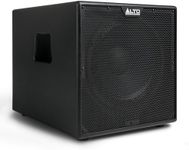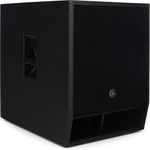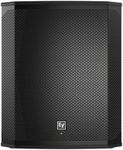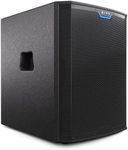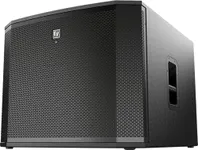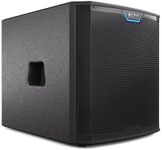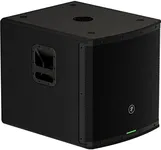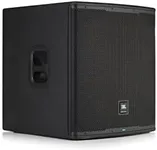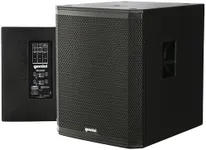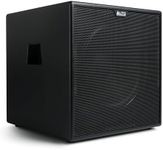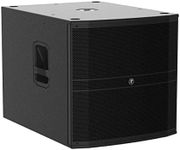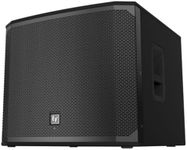Buying Guide for the Best Pa Powered Subwoofer
When choosing a PA-powered subwoofer, it's important to consider several key specifications to ensure you get the best fit for your needs. A PA-powered subwoofer is designed to enhance the low-frequency sounds in your audio setup, providing deep bass that can make a significant difference in the overall sound quality. Whether you're a DJ, a live performer, or setting up a sound system for events, understanding these specs will help you make an informed decision.Power Output (Wattage)Power output, measured in watts, indicates how much power the subwoofer can handle and produce. This is crucial because it affects the volume and clarity of the bass. Subwoofers with higher wattage can produce louder and more powerful bass. For small venues or personal use, a subwoofer with 300-500 watts might be sufficient. For larger venues or outdoor events, you might need a subwoofer with 1000 watts or more. Consider the size of the venue and the type of events you will be hosting to determine the appropriate power output.
Frequency ResponseFrequency response refers to the range of frequencies the subwoofer can reproduce, typically measured in Hertz (Hz). This is important because it determines how low the subwoofer can go in terms of bass. A typical range for a subwoofer might be 20Hz to 200Hz. If you need deep, rumbling bass, look for a subwoofer with a lower minimum frequency. For general use, a subwoofer with a range starting around 40Hz should be adequate. Your choice should depend on the type of music or audio you plan to play and how much emphasis you want on the low-end frequencies.
Driver SizeThe driver size, measured in inches, refers to the diameter of the subwoofer's speaker cone. Larger drivers can move more air, producing deeper and more powerful bass. Common sizes range from 10 inches to 18 inches. For smaller spaces or portable setups, a 10-12 inch driver might be sufficient. For larger venues or if you need more impactful bass, consider a 15-18 inch driver. Think about the physical space you have available and the level of bass performance you require.
PortabilityPortability is an important factor if you need to move your subwoofer frequently. This includes the weight and size of the subwoofer, as well as features like built-in handles or wheels. Lightweight and compact subwoofers are easier to transport and set up, making them ideal for mobile DJs or bands. However, they might not produce as much bass as larger, heavier models. Consider how often you will need to move the subwoofer and whether you have the means to transport heavier equipment.
Built-in AmplifierA built-in amplifier means the subwoofer has its own power source, which simplifies setup and ensures the subwoofer is perfectly matched to its amplifier. This is important for ease of use and optimal performance. Most PA-powered subwoofers come with built-in amplifiers, but the power rating of the amplifier should match your needs. Look for subwoofers with amplifiers that have features like adjustable crossover frequencies and phase controls for better integration with your main speakers. Choose a subwoofer with an amplifier that offers the control and power you need for your specific setup.
Connectivity OptionsConnectivity options refer to the types of inputs and outputs available on the subwoofer. This is important for ensuring compatibility with your existing audio equipment. Common connections include XLR, TRS, and RCA inputs. Some subwoofers also offer Bluetooth connectivity for wireless audio streaming. Make sure the subwoofer you choose has the appropriate connections for your mixer, audio interface, or other equipment. Consider the flexibility you need in terms of connecting different devices and whether you require wireless options.
